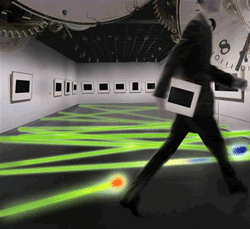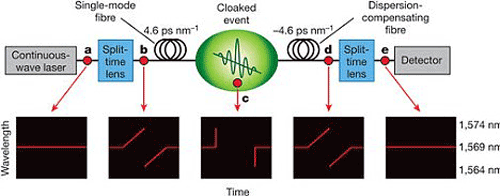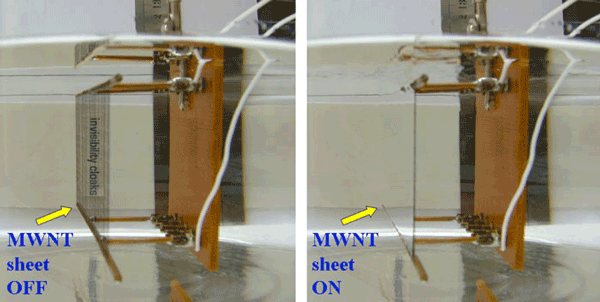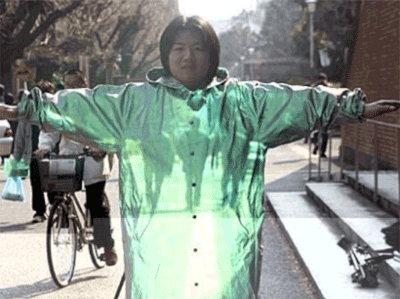Researchers cloak events by manipulating light
Groundbreaking study brings spatio-temporal cloaking one step closer to reality
A team of Cornell University researchers, with support from Darpa, the Pentagon’s outside-the-box research branch, have successfully figured out a way to mask events by distorting light.

Illustration demonstrates how researchers created an invisibility technique that cloaks an object and can mask an entire event like an art thief stealing a painting without setting off alarms or showing up on surveillance cameras. (Via: msnbc.msn.com)
Their research, as reported in this week’s edition of Nature , details the team’s ability to manipulate and control beams of light, and explains an experiment in which they were able to hide a flash of red light within a fiber optic cable for 40 picoseconds.
How they did it:
The team’s research, and the success of their experiment, was possible because of a duality that exists between space and time in electromagnetic theory; that is, the diffraction of a light beam in space is mathematically equal to the temporary propagation of light through a dispersive medium.
More simply, diffraction and dispersion are symmetric in spacetime.
This led researchers to the idea that since it’s possible to make a lens that focuses light in space using diffraction, so too must it be possible to use dispersion to make a lens that focuses in time.
These lenses (time-lenses, as they’re better known) can be created using an electro-optic modulator, which gives them the capability to magnify or compress in time.
The team used two time-lenses in series and sent a beam of green light through them via the fiber optic cable. The first lens compressed the light in time while the second decompressed it. This created a temporary time gap in between the two lenses, allowing for an event – like shooting a red laser – to occur, yet go unrecorded:

(Via: nanotechweb.org)
To the outside observer, the light coming out the second time-lens appears perfect and completely undistorted. Between the two lenses, though, there’s a space-time void capable of cloaking events that occur within the short amount of time it takes for the light to pass through both lenses.
Since the event is never observed as having happened in our perception of time, researchers refer to this form of time cloaking as a “time hole.”
Other cloaking research:
This groundbreaking study comes on the heels of some other recent successes in cloaking research:
Last year, researchers at the University of Texas were able to harness the mirage effect to make objects disappear:

(Via: nanotechweb.org)
In 2010, a team at the University of St. Andrews made tremendous progress by using metamaterials to trick the human eye into not being able to see what was right in front of them:

(Via: technology-corner.com)
This has led many to speculate on how close we are to science fiction becoming a reality. Specifically, by combining these cloaking techniques – physical cloaking and time cloaking – entire covert operations could occur without any record of the event having taken place.
What’s next?
Well, for all the fans of spatio-temporal cloaking out there, this is a HUGE step forward for this area of study. Manipulating light to mask super-quick events, like those that occur in data transmission, could soon help in the area of covert computer operations.
In reality though, researchers still have a long way to go. After all, we are talking about picoseconds here (that’s trillionths of a second). In fact – and this is according to the Cornell scientists themselves – right now it would take a machine 18,600 miles long to produce a time cloak for an event lasting just one second.
So, while this is great news, there are still a few modifications that need to be made to this system before an entire event – like the art heist illustrated above – can take place unbeknownst to everyone within a visible radius. ■
References for this article via:
1. nature.com/nature/journal/v481/n7379/full/nature10695.html#/contrib-auth
Advertisement
Learn more about Electronic Products Magazine





